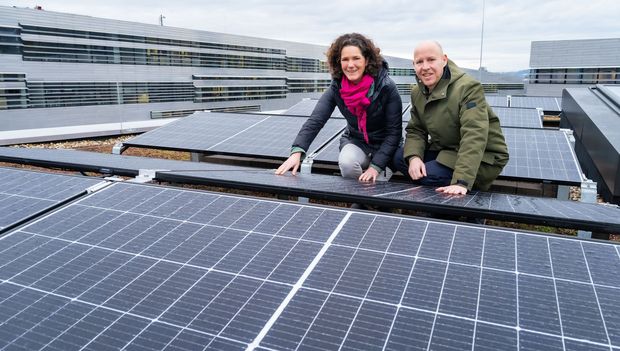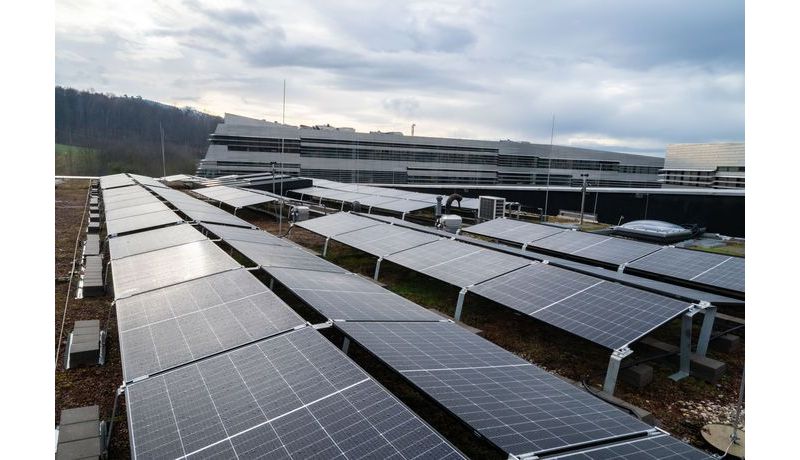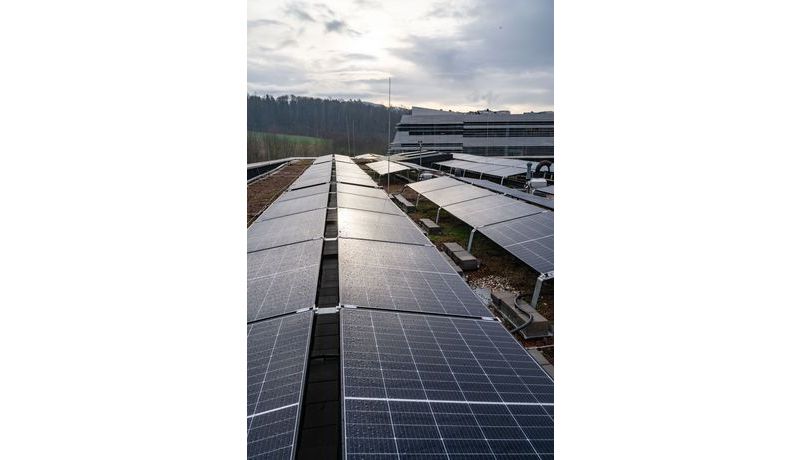The Johannes Kepler University Linz and the BIG (Bundesimmobiliengesellschaft) are gradually installing large-scale photovoltaic systems on buildings at the JKU in an effort to switch to solar power.

This represents an important milestone towards the JKU’s “Mission 2030 - A Climate-Neutral JKU”. Scientists at the JKU are also actively involved in research focusing on advancements in photovoltaic systems.
For years now, the JKU has been actively engaged in environmental protection and implementing a variety of programs and policies to support sustainability throughout the university, especially in teaching, research, administration, mobility, campus life, and infrastructure.
The JKU aims to become a climate-neutral university by 2030 and together with the JKU Energy Institute, the university has created a roadmap outlining just how the JKU can become climate-neutral. The transition to renewable energy is also part of the "2030 Mission" and both BIG (as the owner of the buildings on campus) and the JKU are jointly committed to a large-scale conversion to solar power.
A Photovoltaic Initiative at the JKU
The LIT Open Innovation Center (OIC) and the Teichwerk already have partial photovoltaic systems. The PV system on top of Science Park 5 became operational in late 2023. The university plans to have photovoltaic systems (with a capacity of a minimum of 1,000 kWp) in place on rooftops at the JKU by the end of 2024. The plan involves installing PV systems on Science Parks 1 and 4, at the LIT OIC, at the Kepler Building, at the House of Schools, and at the Juridicum Bldg.
Alexander Freischlager, JKU Vice-Rector for Campus Enhancements, Sustainability & Digitalization, remarks: "The JKU aims to be a climate-neutral university by 2030. Switching over to solar power is an important milestone to accomplish our ambitious goal. We expect to use 100% of the generated electricity directly and draw little from the grid."
By 2025, the Kepler Hall and the Learning Center will be outfitted with additional PV systems. The systems listed above (with a maximum output of 1,500 kWp by the end of 2025), could supply power to approximately 350 single-family homes. The total area of the installed PV modules will be approx. 7,800 m².
Maximilian Pammer, head of the Universities division at BIG, added: "As part of its sustainability strategy, the BIG is pushing ahead to switch over to renewable and locally available power sources. The BIG is installing photovoltaic systems throughout Austria, generating a total of approximately 12 MWp on university properties alone, equivalent to the average consumption of over 2,700 single-family homes. The PV initiative at the JKU is part of a larger package of measures aimed at decarbonizing campus buildings, and including thermal renovations."
JKU Research on Solar Power
The JKU aims to not only use solar power itself, but also continue conducting research to advance solar power systems. Two examples: For many years, JKU solar pioneer and Wittgenstein Award winner Niyazi Serdar Sariciftci and his team at the Linz Institute of Organic Solar Cells and at the JKU Institute of Physical Chemistry have been conducting research on photovoltaics. There have been numerous projects as well as dissertations and Master's theses. Together with ten international university partners as part of a project consortium and as part of the "OPVStability" project, JKU scientist Markus Clark Scharber has been conducting research on advancements in highly efficient and stable organic solar cells. Thanks to a simpler manufacturing process, flexible properties, and lightweight design, when it comes to integrating photovoltaics into building façades or for use in more portable applications, these cells are considered promising candidates.
JKU researchers at the Christian Doppler Laboratory, "CDL-AgePol", are also actively conducting research on photovoltaic modules that require a combination of plastic, glass, silicon, and metals, and then exposing the surfaces to extreme stress conditions. JKU researchers at the CD Laboratory are exploring the long-term durability of these types of components when subjected to complex, challenging conditions. Gernot Wallner (JKU Institute of Polymeric Materials and Testing) explained: "Plastics make solar power more feasible. In this case, it solves problems because without plastic, solar power would be less cost-effective. Our research aims to help ensure that the plastic contained within each PV module is more durable and efficient, and that the production process is significantly more energy-efficient."










